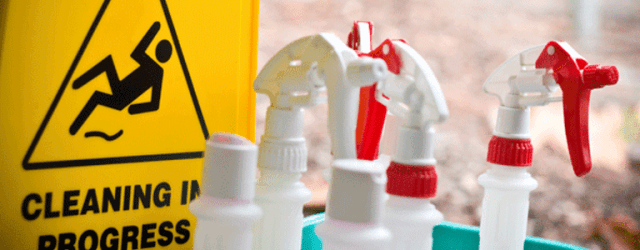International Countries’ Regulations
United States of America
In the journal Science, De Gouw and others report that the amount of Volatile Organic Compounds or VOCs emitted from household and industrial products is 2 to 3 times higher than official US estimates suggest. The result is surprising as only approximately 5% of raw oil is turned into chemicals for consumer products, with 95% ending up as fuel (MacDonald et al, 2015).
According to the Bureau of Labor Statistics, more than 2.1 million janitors work in the US (U.S. BUREAU OF LABOR STATISTICS, 2020). About 6% of janitors experience workplace injury from chemical exposure brought about by domestic cleaning agents. Moreover, anyone in the building can breathe in the VOCs from these cleaning products. At levels of typical use, the risk of adverse health impacts from domestic cleaning products is pretty low. Still, reducing potential hazards is an integral part of chemical management safety. Certain chemicals may irritate skin, eyes, or throat. Some commercial-grade products may be hazardous in concentrated forms. Cleaning products enter the environment during the course of regular use by getting rinsed down the drain or evaporating into volatile compounds. Residue can linger on surfaces and cleaning tools.
The Environmental Protection Agency or EPA has also issued regulations limiting the volatile organic compound (VOC) concentration in various institutional and consumer cleaning products. Products that may contain regulated VOC’s include (but are not limited to) bathroom and tile cleaners, disinfectants and sanitizers, furniture cleaners, laundry starch and detergents, fabric refresher (linen spray), hair styling products, shaving gels and air fresheners (room spray).
United Kingdom
In the EU, there are different regulations to ensure the safety of domestic cleaning agents for household use. For example, the CLP Regulation, it is a regulation on classification, labelling and packaging of chemicals, regulating the way that chemicals and products containing them are labelled and packaged. If the product contains hazardous chemicals, it must be labelled with a pictogram and an explanation of what it means. This helps consumers to handle the product safely and gives advice on what to do in case of an accident.
References
McDonald, B.C., et al. (2018). Volatile chemical products emerging as largest petrochemical source of urban organic emissions. Science, [online] 359(6377), pp.760–764. Available at: https://science.sciencemag.org/content/359/6377/760.
U.S. BUREAU OF LABOR STATISTICS (2020). [online] Available at: https://www.bls.gov/oes/current/oes372011.htm.
(https://www.theguardian.com/environment/2018/feb/15/cleaning-products-urban-pollution-scientists)
